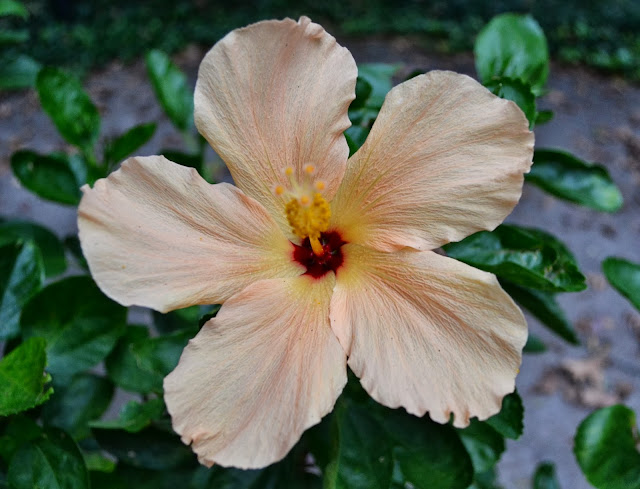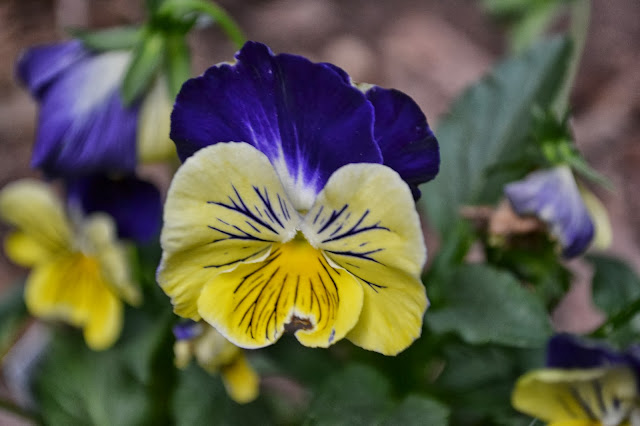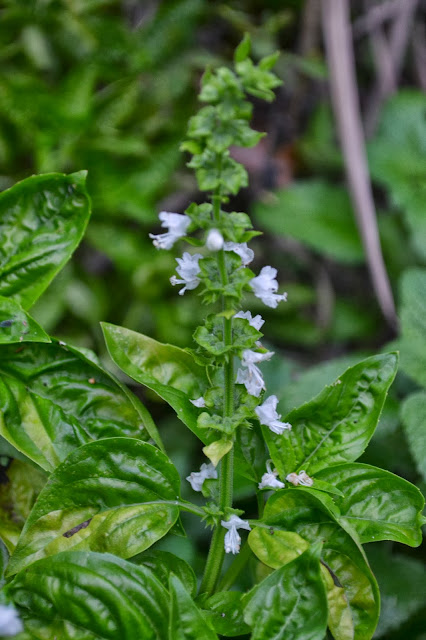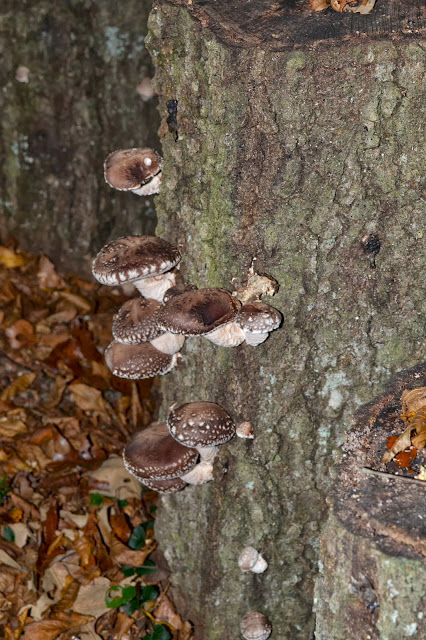My bargain tropical hibiscus continue to add a splash of color to the front garden. At the low, low price of $5 for two, lovely huge hibiscus, how could I pass them up? Granted, I have greenhouses to tuck them into for the winter, otherwise they wouldn't be very happy in our zone 7b frosty temperatures. I love a good flowering bargain!
Yes, I'm once again singing the praises of fraise des bois. The plants are still covered in their darling little blooms, and even better--they're producing another nice showing of their incredibly sweet fruit. What's not to love about these little edible beauties? They are darling in a pot, plus they make a lovely, non-creeping boarder in shady beds. Truly, they will always be one of my favorite plants.
The Japanese anemones put on quite a show for the past month. Now, they're slowly winding down, with a few dozen blooms remaining. It's definitely time to thin and transplant these beauties.
If it's fall, then you know it's time for pansies and violas--hooray! Just as I'm beginning to feel blue about the lack of blooms in the garden, the cheerfulness of pansies erases my grumpiness. The violas found their home in the potager this weekend, but the many, many flats of pansies are anxiously awaiting the blister on my palm to heal so that they, too, can get tucked into their new garden home.
...or the praying mantis egg case on the lemon tree. We're anxiously awaiting our new beneficial arrivals to the garden.
Also surprising are the camellias. Years ago, I planted half a dozen camellias along the south side of the house, an area we rarely pass on our way to the forest or the kitchen garden. It's a shame, because the camellias are spectacular right now. We need to add something to the area to make it a destination instead of an after-thought. The blooms shouldn't be missed, but often I do.
I'm not typically a mum fan, but somehow it doesn't seem like fall without a few bursts of bright cheerfulness. The tired garden certainly benefits from the mums' overwhelming sunniness.
The microclimate by the pool garden continues to encourage blooms. The tea olives smell divine...
...the Encore azaleas provide a great burst of showy color...
...and the peach Drift roses burst with new blooms.
The containers by the pool continue to send out new blooms. I keep searching for seeds from my favorite heirloom, snail flower. At $1 per seed, I'm hoping to harvest a few seeds for next year. Nothing yet, but I'm crossing my fingers.
The mandevilla seems to enjoy the cooler temperatures, which seems counter-intuitive to its nature. Soon, I'll be keeping a close eye on the weather for freeze warnings to make certain these babies and my other warm-natured plants are safely nestled into the greenhouses before it becomes too chilly.
Ah, the crazy viburnum. How can you not love a plant that blooms...and blooms...and blooms some more? What an incredible workhorse of a plant. We've trimmed and pruned, and still this shrub is heavy with blooms.
Talking about workhorses...holy marigolds! What began as a few plants tucked into the kitchen garden beds to repel pests turned into a sea of orange and red as the weather cooled. The butterflies and bees adore the blooms. I've never been a fan of marigolds, but how can you argue with a profusion of blooms like that? I may need to show marigolds more respect!
The herbs provide blooms for several pollinators. Tiny wasps and bees enjoy the basil flowers. Our basil struggled this summer. I think the enormous amounts of rain caused it to suffer from a fungus, although it's looking better now that it's cooler. Again, for a heat loving plant, I'm perplexed.
While I've cleared most of the kitchen garden beds for fall crops, I left the scarlet runner beans. The multicolored blooms add a bit of color to the beds, and the vines continue to produce.
For the first time, I found small red morning glory, a native wildflower, in the clearing near the river.
I also don't recall finding goldenrod in previous years. This year, however, we have several patches of it, which I love.
Our heavy rains led to an amazing season for mushrooms. The shiitake logs are producing like mad. We ate delicious risotto ai funghi a few nights ago, and I'm frantically searching my cookbooks for more recipes that can include shiitakes. The mushroom logs are truly one of my greatest garden success stories. Growing mushrooms is so easy that I'm not sure why more people don't do it. Shiitakes and fraise des bois--I'm equally enamored.
Tomorrow, I must finished planting the potager and work on the large kitchen garden. What are you planting in your fall garden? What's your favorite fall flower or vegetable?
Happy October Bloom Day to you!
XOXO ~
Julie























